| Plantagenet Kings |
| George Plantagenet Duke of Clarence (21 October 1449 – 18 February 1478) |
| Henry Plantagenet also known as Henry Curtmantle, Henry FitzEmpress |
| Katherine Plantagenet (25 November 1253 – 3 May 1257) |
| Arthur Plantagenet 1st Viscount Lisle |
| Elizabeth Plantagenet |
| Lake Plantagenet Minnesota |
| Plantagenet descendants |
| The Plantagenet and tudor novels |
| Plantagenet face |
| Joan Plantagenet Lady of Wales – Born: 1191, France |
| John Plantagenet King of England (24 December 1166 – 19 October 1216) |
| Plantagenet descendants in america |
| BBC the Plantagenets 2014 TV |
| Edward V (2 November 1470 – c. 1483) |
| Edward of Middleham, Prince of Wales (1473-1484), only son of King Richard III of England |
| Edmund Plantagenet Earl of Rutland (17 May 1443 – 30 December 1460) |
| Edward i Plantagenet Edward I of England (1239-1307) |
| Empress Matilda Plantagenet 1102 |
| Edward of Norwich, 2nd Duke of York (c. 1373–1415), grandson of Edward III |
Who were the Plantagenets?
Contents
A huge, powerful and richest family of Europe that ruled England for over 300 years are “The Plantagenets”.

What was the House of Plantagenet?
The House of Plantagenets was originally from the Counts of Anjou. The Plantagenet dynasty was established in the tenth century by Fulk I of Anjou. They ruled England from 1154 to 1485 for 331 years, providing England with 14 greatest kings.
What is Plantagenet Pronunciation?
Before centuries the English language had no fixed rules for spelling system. Hence there were many variations in the spelling that were normally used in the Anglo-Norman surnames. So the Plantagenet had many spelling variations in past like Plantaggenett, Plant, Plante, Plantagenet and many others.
However, one can have the perfect pronunciation of Plantagenet by breaking the word Plantagenet into the sounds of four: “PLAN + TAJ + UH+NUHT “.Say aloud the pronunciation and exaggerate the sound till you produce them consistently.
Origin of the Plantagenet Family
How did the House of Plantagenet start?
The surname Plantagenet first originated in London. A family seat was organized there with the descendants of Fulk, Count of Anjou in the 10th century. Then his descendants were depicted by the King Henry V of Germany.
King Henry II of England was the son of Geoffrey Plantagenet. Henry became the successor to the throne of England and hence began the dynasty of Plantagenet. Henry II had three royal lines which continued as it is till Edward III became the king. He added a crest of another lion to the previous one.
Also, one must keep in mind that the monarchs of the Plantagenet were not just ruling England. The dynasty has its origin both from the Anjou line and the Norman line. During that period Anjou was a huge domain that was controlling a major portion of France. Hence the Plantagenets were bound to protect all three: England, Normandy, and Anjou.
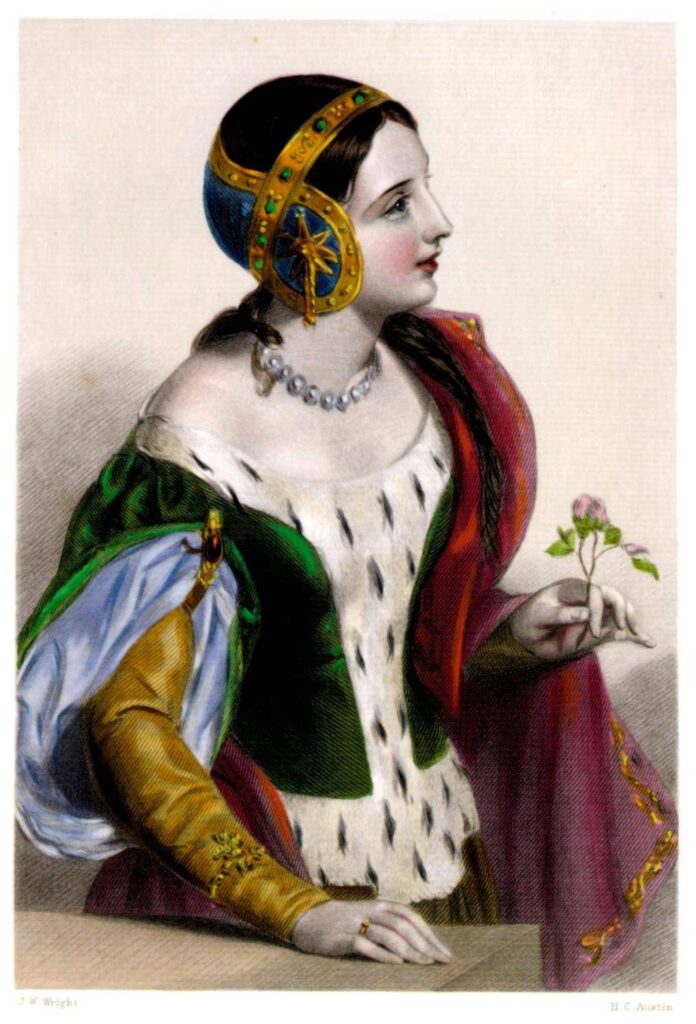
How is the Surname Plantagenet derived?
The first Plantagenet king was Henry II. His father was Geoffrey, Count of Anjou and her mother was Empress Matilda, daughter of King Henry I. Geoffrey owned very vast land in Anjou that was as big as Normandy. The surname Plantagenet was obtained from Geoffrey as he wore the Sprig of blossom or say Planta Genista in his helmet.
However, other sources say that the name Plantagenet arose because Geoffrey planted many broom plants to improve his hunting chase and abilities.
Describe the Plantagenet dynasty
The Plantagenet dynasty is generally subdivided into three parts
1) Angevins – They were the first Plantagenet kings who ruled from 1154- 1216.
2)The Plantagenets – There ruled from the year 1216-1399.
3)The House of Lancaster and York – The main house of Plantagenet was separated and then these two houses were formed. They were considered the True English kings and not the French Kings.
The Plantagenet Family Tree
Below shown is the family tree of the Plantagenet family. It starts with the reign of King Henry II in 1154 and ends with the last Plantagenet King Richard III of the House of York and Lancaster in the year 1485.
A total of 14 kings belonged to the Plantagenet dynasty out of which three kings were of Angevins, 6 kings of The Plantagenets and 6 kings from the House of Lancaster and York.
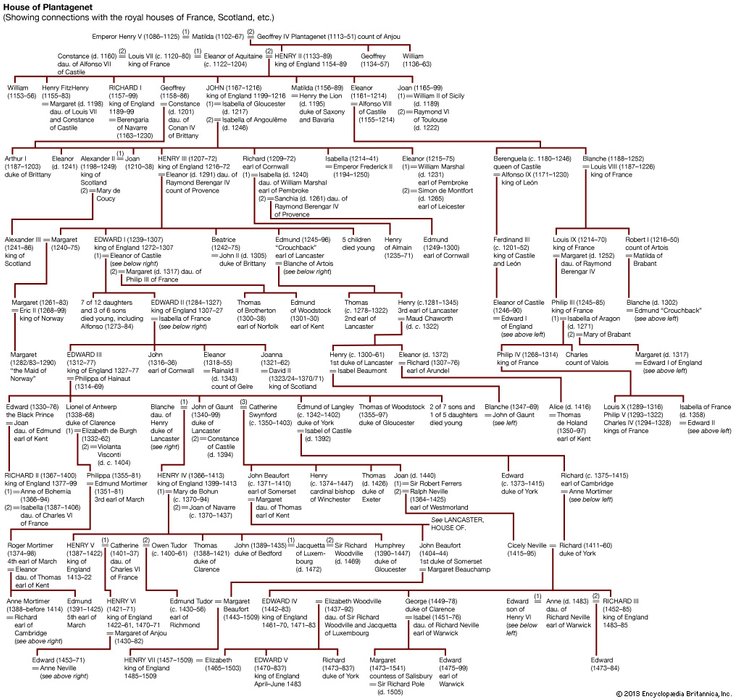
Plantagenet Coat of Arms
What is Coat of Arms?
Basically, the coat of arms is a unique design represented on the shield of the knight. The design for each individual was unique and that one person only has the right to that coat of arm during his whole life. He may be allowed to pass that coat of arm to his descendants which later will be the coat of arms of the family. The symbols that are displayed on the coat of arms depicts the person’s achievements.
The first true armigerous dynasty of England was the Plantagenets. The coat of arms of this royal family signified the arms of England specifically the arms of the royal house of England.
The first coat of arms was adopted by King Richard also known as the Lionheart king who was the son of King Henry II of England. The coat of arms created by the Lionheart King had “Gules, three lions passant guardant”.
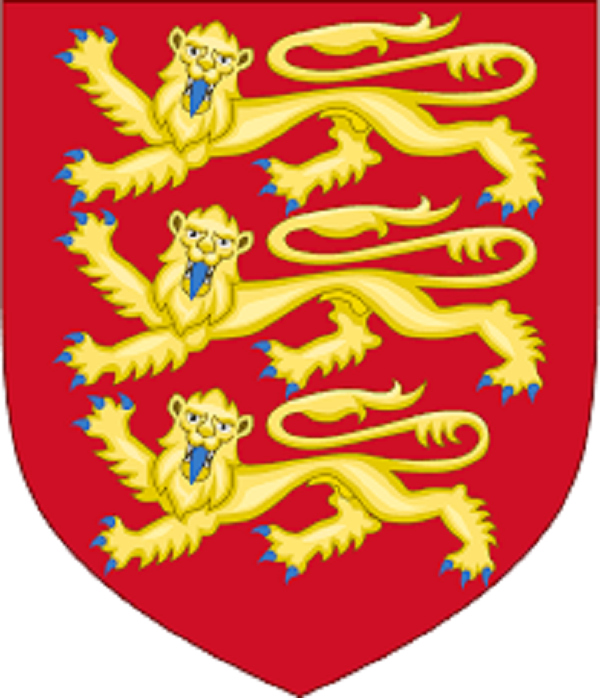
The other descendants had just variation in the original coat of arms of England.
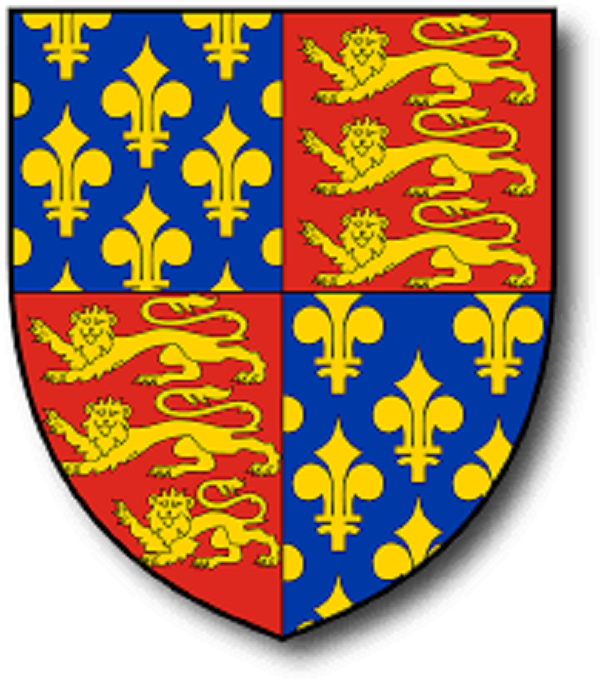
What language did the Plantagenets speak?
The upper classes spoke French because English was considered to the language of the peasants. The Church used Latic as usual. However, by 1390, English had become the language in which most literature was produced. Hence it had become the most popular language.
Plantagenet Descendants
The House of Plantagenet that ruled England from 1154 to 1485, had fourteen kings from the Lancaster House and the House of York. Richard III was the last member of the Plantagenet family who was killed in 1485. There have been some more descendants through a few members of the Plantagenet dynasty. It ended in 1707.
House of Plantagenet Titles
The alternative titles of the royal House of Plantagenet were House of Anjou and Angevin dynasty. The titles awarded to the family member of the house were: King of the Romans, Prince of Wales, Duke of Normandy, Dutchy of Brittany, Counts of Anjou, Duke of Anjou and Count of Pitier.
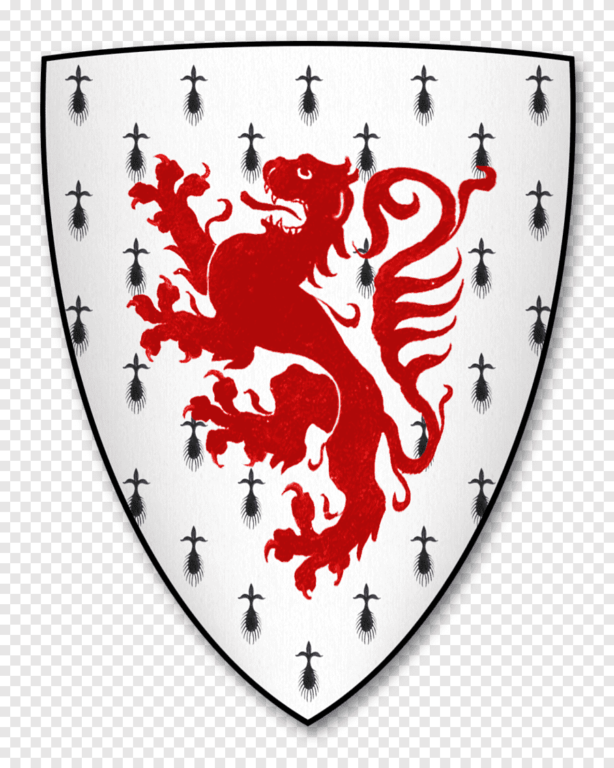
House of Plantagenet Conflicts
The era of the rule of the Plantagenet dynasty saw many conflicts and wars. These wars happened due to several reasons. England was involved in the crusades and the European wars. It was also the duty of the Plantagenet monarchs to protects Anjou, Normandy and England.
Some of the major conflicts that happened during the Plantagenet rule were:
- The Murder of Thomas Beckett
- The Third Crusade
- Edward I’s war with Scotland
- Edward I’s war in Wales
- War of Scottish Independence
- The Peasants’ Revolt
- The War of Roses
House of Rose
The War of Roses that happened between 1455 to 1485 was a series of civil wars fought between the House of York and the House of Lancaster. The wars were fought for the English throne, although, they were named many years later.
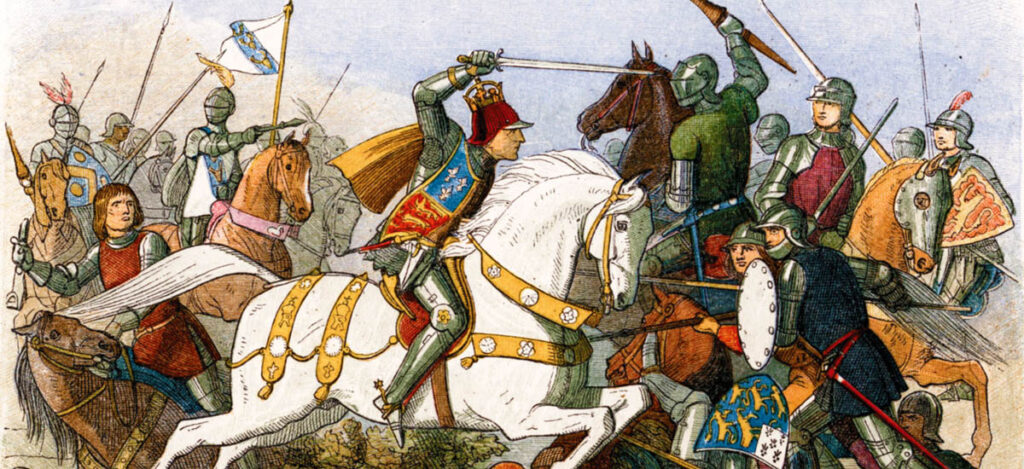
The House of York was symbolised by the white rose and the House of Lancaster was symbolised by the red rose. It thus came to be known as the war of the House of Roses.
House of Plantagenet Valois
The House of Valois was a branch of the Capetian dynasty or the House of Capet in France. The House of Capet was succeeded by the House of Valois to the throne of France. They remained the royal house of France from 1328 to 1598.
House of Plantagenet Facts
- The Plantagenet dynasty ruled England longer than any other dynasty. They ruled England and a major portion of France for almost three-hundred years.
- The Plantagenet family consisted of four houses – The Angevins, The Plantagenets, House of Lancaster and the House of York.
- The name of ‘Plantagenet’ originated from Geoffrey V’s nickname which means “sprig of broom” (a flower). Geoffrey loved to wear this flower on his hat. However, it was not used as the family name until Richard, Duke of York, adopted it.
- It was under the name of Plantagenets that punishments like hanging, quartering and burning at stakes were introduced.